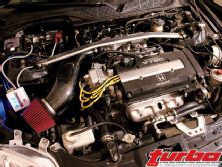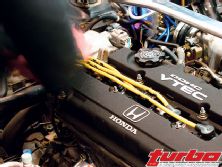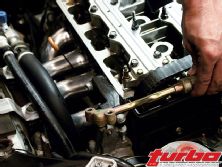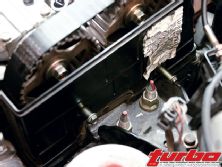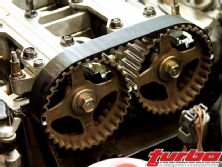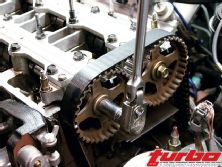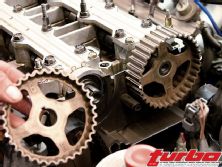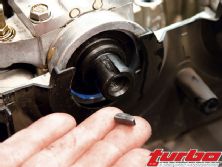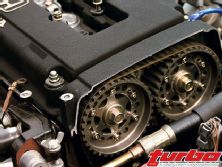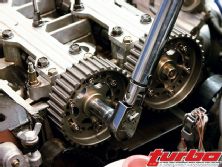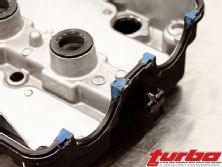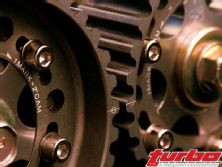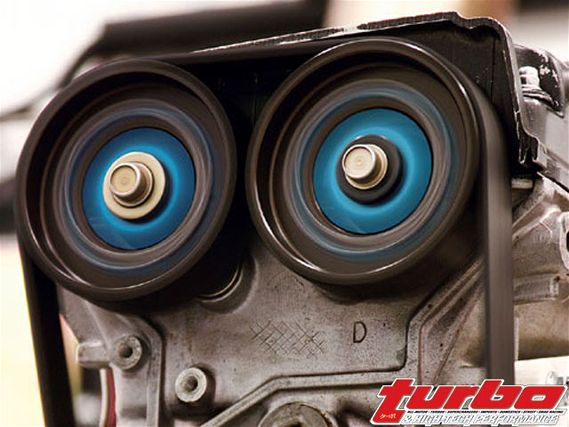 | Skunk 2 Cam Gears - The Science Of Cam Gears
| Skunk 2 Cam Gears - The Science Of Cam Gears Power in numbers-the golden tenet. Everybody's got a little bit of power under the hood, but it's never enough. Unless you can smoke Titan rockets off the line or go through tires faster than a drift team you'll always find yourself searching for more. One way to unleash more ponies is with the use of adjustable cam gears. We lay down the fundamentals on the shadowy mystery known only as cam gears. We're jumping straight into how to install camshaft sprockets/cam gears, why you'd want to adjust them, the theory behind how they work, and why you'd want to buy a set in the first place.
Many of our readers are split into one of two camps. One side says, "I'm running boost to get big power, why would I need to mess with any cam stuff?" The other says, "I'm buying cams because I want to stay naturally aspirated, and I'm getting these Brand X gears because they look badass." Please, for your engine's sake, read a little further. There might be something useful in here that'll shed some light, no matter which camp you belong to. To get the definitive scoop on cam gear tech, we headed over to Skunk2 Racing in Norco, Calif., to check out a hands-on cam gear install.
The first thing to think about before buying any camshaft or valvetrain part is to understand exactly how that part is going to benefit your engine in the first place. A camshaft is, in essence, a mechanical method of controlling the opening and closing of intake and/or exhaust valves. The camshaft uses machined lobes to determine how much and how long a valve stays open relative to the piston's position within the cylinder. The how much and how long is exactly what determines the amount of air and fuel mixture that goes in and how much exhaust gas goes out, which affects both driveability and power.
Taking into consideration an average dual overhead cam (DOHC) engine, there are cams that take care of only the intake valves and there are cams for only the exhaust valves. Cam gears are the teethed sprockets bolted to the ends of the camshafts that are spun by either belts or chains from the crankshaft. Aftermarket cam gears are lightweight replacements for OEM pieces that allow adjustment of camshaft timing, i.e., the position of the camshaft relative to piston position.
The whole point of adjustable cam gears is to allow the user to put the camshafts into the optimum timing position. But what is optimum for your car? The answer is, it depends. Engine size, camshaft profile, performance modifications, any of these will affect the optimum position for your camshafts. If you pull your cylinder head and have it milled, you'll surely be interested in adjusting your cam timing back when you find out you're a few degrees off without having touched anything else. Even if your car is absolutely bone stock, right down to the floor mats, you can still benefit from the use of adjustable cam gears. Adjustable camshaft gears allow you to tweak the conservative factory settings for increased power and driveability. Adjustable cam gears also give the user the ability to shift peak power throughout the rpm range, a big plus if you are a low-end city driver, mid-range autocrosser, or high-rpm drag racer.
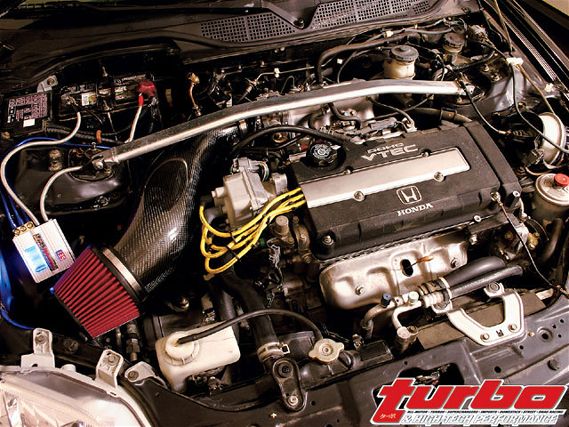 | Our engine bay, before any cam gear swap work.
| Our engine bay, before any cam gear swap work. A big portion of moving the powerband around is done through the adjustment of overlap. Overlap is the amount of time during which the intake and exhaust valves are simultaneously open. It is during the sliver of time that overlap occurs that attention must be paid, because it is here that power, gas mileage, emissions, and driveability are all affected. As the exhaust gas rushes out the open exhaust valves, the vacuum it creates helps draw in some of the intake mixture through the open intake valves. A balance must be struck though, taking care to manage the movement of gases in order to avoid an overly lean or rich situation.
By advancing or retarding intake and exhaust cam timing we can adjust overlap and its resulting effects on power and torque. In general, retarding an exhaust cam or advancing an intake cam will increase overlap and advancing an exhaust cam or retarding an intake cam will decrease overlap. The amount of overlap and the proper settings for each cam gear depends on each car, but be aware, it is during overlap that valve-to-piston interference can occur. Possessing an inverse relationship, by decreasing overlap there is an increase in both valve-to-valve and piston-to-valve clearance, while increasing overlap will decrease both.
So, needless to say, try not to advance your intake or retard your exhaust cams too much. Both will decrease your valuable clearances and run closer to the risk of engine damage. Horsepower is good, but pistons hitting valves is definitely not. The best settings to achieve peak power and reliability are different for every car, but the recommended way to find out which settings are best for you is on the dyno.
If you have no knowledge of how your engine will respond, you'll have to try various combinations of advancing and retarding the intake and exhaust gears and note the results of your powerband. When you are satisfied with those results, you can fine-tune your powerband throughout the entire rpm range by adjusting both gears the same amount. In general, advancing timing for both intake and exhaust will increase low-end power and decrease high-end power, while retarding timing for both will shift the power to the top-end.
Also, all adjustable cam gears are not made equal. Due to their adjustable nature, many cam gears on the market make use of small bolts to hold their settings in place after installation. Cheaper models have bolts with a tendency to slip, leading to disastrous results. Attention must also be paid to the machining of the cam gear teeth. Lower quality machining of brittle metals can lead to gears with poor grip that prematurely wear both the timing belt and their own teeth.
Skunk2 CNC machines all of their gears from billet aluminum and utilizes a six-bolt design to ensure the gear will never slip out of place. Their Pro Series cam gears also possess the benefit of being some of the lightest on the market, which brings to mind another good point. Anytime you are able to free up some unwanted reciprocating mass in the valvetrain you and your engine will be very happy.

